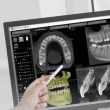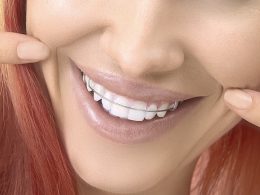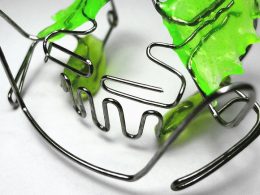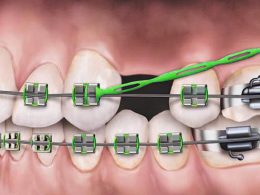Table of Contents
Good hygiene, perseverance and a little common sense are usually sufficient qualities for an Orthodontic patient to successfully complete their treatment. However, they do not completely exempt you from having to face any inconvenience or occasional unforeseen during the course of it, due to the considerable amount of wires and devices installed in your mouth.
If you are experiencing an Orthodontic issue and are in a non-emergency situation, in many circumstances you should be able to call your Orthodontist to get tips on how to deal with the issue at hand. Many problems can be brought to a solution over the phone or virtually. Notifying your Orthodontist of problems that occur is always recommended.
We have gone ahead and assembled a list of tips and tricks that may be able to help you if you are experiencing braces problems at home. If you are having a real emergency issue (something very rare), always schedule an appointment with your Orthodontist in order to rectify the situation without potentially causing any damage to yourself or your treatment plan.
Your Orthodontic Kit
The following list is a do-it-yourself toolbox that can provide you relief if you are facing a non-emergency Orthodontic issue. This tiny disaster-preparedness kit can likely get you through the majority of problems that can pop up during your Orthodontic treatment:
- Orthodontic relief wax.
- Dental floss.
- Disinfected tweezers.
- Q-Tips.
- Salt used to create a rinse.
- An interdental brush.
- Toothpicks.
- Non-prescription pain relievers such as Ibuprofen, Aspirin or Acetaminophen.
- Some topical anesthetic such as Ora-Gel.
If you have these tools available, most non-emergency Orthodontic care dilemmas can be handled at home. When questioning whether a problem with your Orthodontic care is an emergency, please reach out to your Orthodontist’s clinic for further information.
Braces Problems and How to Fix Them
As we noted earlier, an actual braces emergency is a pretty unlikely occurrence. The vast majority of the time, it is simply a matter of comfort and making sure your treatment stays on course. Here are the 6 more common issues and how to troubleshoot them:
1- Food Stuck in Your Braces
Getting food trapped in your brackets and wires is by no means an emergency with braces but it can be an annoyance, especially when you are traveling or out and about and do not have supplies handy. If you are home, floss using an Orthodontic flosser or floss threader or break out your interdental brush and dislodge the food debris.
Putting together a kit with disposable flossers and a travel toothbrush and taking it with you when you are on the road, at school or at work will make your life a whole lot easier. However, if you forget to bring it along, you will not need to walk around with spinach in your braces all day. Very carefully poke the piece of food loose with a toothpick and then rinse well with water.
2- Sensitive Teeth
For a few days after your braces have been placed or after adjustments, your teeth may experience some sensitivity. If you have any important activities or commitments, try to schedule your follow-up appointments later or at least a week in advance so that you can enjoy yourself without discomfort to your teeth. To ease the discomfort, sip ice water, smoothies or other cold beverages, eat soft foods, and occasionally a cold treat such as ice cream; especially during the first day or two.
You can also take an over-the-counter pain reliever (follow the instructions on the package) or swish with your saltwater solution.
3- Cheek or Lip Irritation
While your mouth adjusts to the braces, it is completely normal for your lips and cheeks to feel a little irritated. Any discomfort will be mild and will disappear in a few days. During the acclimation period, whether you are on a trip to the other side of the world or sitting in your room, the matter is very easy to resolve.
Make a saltwater solution by mixing one teaspoon of salt in a glass of warm water, stirring and then swishing it around in your mouth before spitting it out. Do this as many times as you would like throughout the day. Dental wax can serve as a barrier and prevent brackets from rubbing the inside of your mouth. Place a piece on the bracket, band or wire that is disturbing.
4- Poking Wire
It does not feel great when a wire sticks out and jabs you in the cheek, but it is an easy fix. First, gently push it out of the way with the eraser end of a pencil or a clean cotton swab. Then, dry off the wire and bordering bracket with a tissue or another cotton swab. Place a small piece of dental wax in the shape of a ball, using light pressure with your fingers until it is well adhered to the area.
Sometimes, when a bracket is loose, it causes a really long piece of wire to protrude. If this is the case, wash off nail clippers and sterilize them in alcohol before using them to carefully snip the excess wire. Call your Orthodontist so that they can schedule you for a repair appointment.
5- Detachment of an Elastic or Metallic Ligature
The wires that run through your brackets are held in place by ligatures, which are either tiny elastic bands (O-rings) or twisted wires. Every so often, a ligature can pop off. If a rubber band came off of your braces, try to find it. If you are a patient who loves bold elastic colors, you will be pretty pleased with yourself when you spot it right away. Wash it and then, if possible, use sterile tweezers to try to insert it. If you cannot, make an appointment with your Orthodontist.
For wire ligatures, you can use the eraser end of a pencil or a cotton swab to snap it back into place if it sticks out. If it is too loose, remove it with tweezers.
6- Loose a Bracket or a Band
It is one of the most undesirable situations in Orthodontics, not only due to the fact that they cause discomfort, but also because they delay treatment. It is best to avoid this type of inconvenience, which is achieved in a very simple way: having common sense to avoid biting excessively hard objects or foods such as ice, bones, seeds, shells and very toasted preparations.
In case this happens, simply try to get the device in place with your finger, place a piece of Orthodontic wax on it and call your Orthodontist’s office to ask if it needs to be recement before your next check-up.
Handling of True Orthodontic Emergencies
So far, the issues we have covered are more of an inconvenience than a real concern. They can almost always be temporarily coped with until consultation. However, while unlikely, there are cases where a patient must receive emergency care. These are the two most serious scenarios:
1- Swallowing a Piece of Your Appliance
If a bracket or other part of your appliance breaks and you swallow it, stay calm. For younger patients, it is important to seek the assistance of an adult to help them. If you have trouble breathing and coughing after swallowing it, have someone look at your mouth and throat with a flashlight. If they do not see the part, it could have been vacuumed. Go to an emergency room right away!
If on the contrary, the piece was swallowed, do not worry, be patient and be careful, they are very small and will surely be expelled with the feces. However, stay tuned for any complication.
2- Traumatic Injury
When playing sports or any activity that could result in a dental injury, we cannot stress the importance of protecting your smile with a mouthguard enough. Even when your braces come off, you should still wear one. If you do get hit in the mouth and you are bleeding a lot and think stitches will be necessary, head to the emergency room.
If a tooth is chipped, fractured, or loose; call your Dentist right away.
If a tooth comes out (avulsion), any Dentist can reimplant it if no more than an hour has passed since the injury, so do not delay. Make sure you grasp the tooth by the crown area and not the root, carefully rinse it with water, and if possible put it back into its socket, either by biting it down or using your fingers to hold it in place. If you cannot, keep it moist by keeping it next to your cheek in your mouth or by placing it in milk (never use tap water).
Once you have been treated at the hospital or by the Dentist, make an appointment with your Orthodontist so that he can assess the situation.
“Just a Little Patience and Some Very Basic Resources, Is All You Will Need to Solve any Problem With Your Braces“.
DENTAL TIP
Now You Can Rest Easy!
Now that you have all the information you need to face any setback with your Orthodontic treatment, we hope that you feel comfortable and confident in the care of your appliances; even while on the road.
Ready to Finally Get the Dental Treatment You Deserve?
All you have to do is send us your dental basic studies so that our professional team can analyze your case and offer you the best treatment option, many times impossible to pay in your home country.
Lower pricing does not always mean reduced quality. DENTAL VIP Specialists are trained in the most modern dental techniques, and we are equipped with state-of-the-art instruments.
We will offer the best price at the best quality for you in Orthodontics, Dentofacial Orthopedics, conventional and ceramic brackets, fixed and removable retainers, Smile Design and other highly specialized treatments.
If you are considering coming to Venezuela for dental work, contact us for more information on how we can help you.
Our WhatsApp Business contact +58 414-9033547 and our email info@dentalvipcaracas.com are at your absolute and complete disposal to make inquiries and provide you with the best possible guidance in Dentistry.












